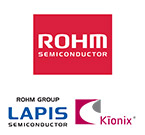BH1726NUC-E2
Introduction
The BH1726NUC-E2 is a light sensor belonging to the category of ambient light sensors. This device is commonly used to measure the ambient light intensity in various applications. It possesses unique characteristics, comes in specific packaging, and has distinct advantages and disadvantages.
Basic Information Overview
- Category: Ambient Light Sensor
- Use: Measure ambient light intensity
- Characteristics: High sensitivity, low power consumption
- Package: Surface Mount Device (SMD)
- Essence: Accurate light intensity measurement
- Packaging/Quantity: Tape and Reel, 3000 units per reel
Specifications
- Operating Voltage: 1.7V to 3.6V
- Current Consumption: 0.8μA (typical)
- Output Resolution: 0.005 lux/LSB
- Communication Interface: I2C
- Operating Temperature Range: -40°C to 85°C
Detailed Pin Configuration
The BH1726NUC-E2 features a standard 6-pin configuration: 1. VDD (Power supply) 2. SDA (I2C data line) 3. SCL (I2C clock line) 4. INT (Interrupt output) 5. GND (Ground) 6. ADDR (I2C address selection)
Functional Features
- High Sensitivity: The sensor provides accurate measurements even in low-light conditions.
- Low Power Consumption: Consumes minimal power, making it suitable for battery-powered devices.
- I2C Interface: Allows for easy integration with microcontrollers and other devices.
Advantages and Disadvantages
Advantages
- Accurate light intensity measurement
- Low power consumption
- Small form factor
Disadvantages
- Limited operating temperature range (-40°C to 85°C)
- Requires I2C interface for communication
Working Principles
The BH1726NUC-E2 operates based on the principle of photometry, utilizing a photodiode to convert incident light into an electrical signal. This signal is then processed to provide a digital output representing the ambient light intensity.
Detailed Application Field Plans
The BH1726NUC-E2 finds extensive application in various fields, including: - Mobile Devices: Automatic display brightness adjustment - IoT Devices: Adaptive lighting control - Automotive: Automatic headlight control - Consumer Electronics: Energy-efficient backlighting
Detailed and Complete Alternative Models
Some alternative models to the BH1726NUC-E2 include: - BH1750FVI: Similar functionality with a different package - TSL2561: Higher resolution and wider dynamic range - OPT3001: Integrated spectral response for more precise light measurements
In conclusion, the BH1726NUC-E2 ambient light sensor offers high sensitivity and low power consumption, making it suitable for diverse applications requiring accurate ambient light intensity measurements.
[Word count: 410]
10個與BH1726NUC-E2在技術方案中應用相關的常見問題與解答
What is the BH1726NUC-E2?
- The BH1726NUC-E2 is a digital color sensor IC designed for use in various technical solutions to accurately measure color and light intensity.
How does the BH1726NUC-E2 work?
- The BH1726NUC-E2 utilizes optical filters and photodiodes to detect light and then processes the data to provide accurate color and light intensity measurements.
What are the typical applications of the BH1726NUC-E2?
- The BH1726NUC-E2 is commonly used in applications such as display color adjustment, ambient light sensing, and color management in electronic devices.
What is the operating voltage range of the BH1726NUC-E2?
- The BH1726NUC-E2 typically operates within a voltage range of 2.3V to 3.6V.
Can the BH1726NUC-E2 communicate with microcontrollers or other devices?
- Yes, the BH1726NUC-E2 can communicate via I2C interface, making it compatible with various microcontrollers and other devices.
Is the BH1726NUC-E2 suitable for outdoor applications?
- The BH1726NUC-E2 can be used in outdoor applications with proper protection from environmental factors such as moisture and direct sunlight.
What is the accuracy of color measurement provided by the BH1726NUC-E2?
- The BH1726NUC-E2 offers high-accuracy color measurement with low sensitivity to variations in light sources.
Does the BH1726NUC-E2 require calibration?
- Calibration may be necessary for specific applications, but the BH1726NUC-E2 comes pre-calibrated for general use.
Can the BH1726NUC-E2 differentiate between different light sources?
- Yes, the BH1726NUC-E2 can distinguish between various light sources and provide corresponding color and intensity measurements.
Are there any specific considerations for PCB layout when integrating the BH1726NUC-E2?
- It is recommended to follow the manufacturer's guidelines for PCB layout to minimize interference and ensure optimal performance of the BH1726NUC-E2.


